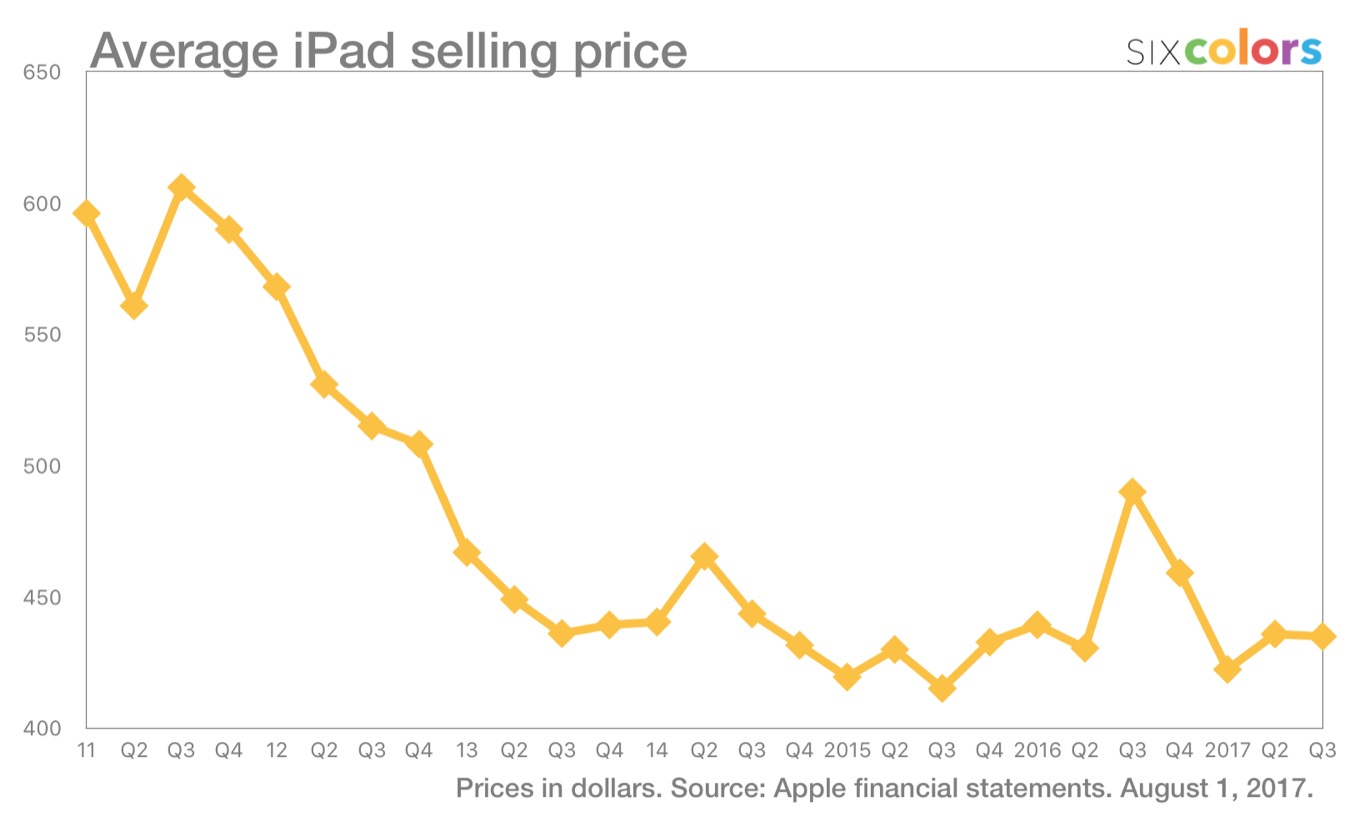By Jason Snell
August 1, 2017 8:00 PM PT
Last updated July 30, 2020
Did the iPad turn the corner this quarter?
Note: This story has not been updated since 2020.
So this quarter was the one where the iPad news finally wasn’t terrible. It took a while. Seriously, it’s been more than three years since Apple posted year-over-year growth in iPad revenue. That’s a really long time—and a long slide downward on just about every iPad chart you can think of.

Yeah… that’s the one. A long, slow slide from more than 18 million units per quarter down to a little more than 10 million. It’s been a rough adolescence for the iPad. And all the while, those of us who are cheering for the iPad have been waiting for the moment when the iPad finally bottoms out and starts recovering. Where it finds its level. Where it plays within itself. Pick any metaphor you like—after 13 straight quarters of revenue regression, I’ve pretty much used them all.
This quarter on his call with analysts, Tim Cook didn’t even need to give one of his patented iPad pep talks. At the start, analysts would ask about the iPad sales drop-offs and he’d reply that he was “bullish on the iPad.” By the end, analysts wouldn’t even bother asking—and Cook would still go out of his way to mention that he felt the iPad was an important product with a bright future ahead of it.
That’s because this year was that quarter. The one where the iPad numbers no longer looked terrible. Now, one quarter doesn’t make a turnaround—but when you consider the contraction of the iPad business for the past 13 quarters, a 15 percent year-over-year growth spurt sticks out like a sore thumb.

As much as I’d like to ascribe the iPad’s turnaround to those awesome new iPad Pro models, I can’t. As the astute John Gruber and Dr. Drang have already noted, the average sales price for an iPad actually decreased slightly this quarter, to $435—and overall iPad revenues were only up slightly over last year.

What this means it that boosted iPad sales are likely being driven by the $329 fifth-generation iPad. At this point, I’m happy to take the win if I’m an iPad fan, even if the growth is coming from the lower-end model.
In the analyst call, Cook highlighted improved sales to the U.S. education market and said that in China and Japan, more than half of iPad sales were to people who had never bought an iPad before. iPad sales also grew across all of Apple’s geographic segments—so this wasn’t a change caused by an aberration in one part of the world.
The story of the iPad isn’t over. It’s a real question about how it grows, and what size of a business it becomes for Apple in the long term. Will sales flatten or start to grow slowly? Is the iPad truly going to get enough of Apple’s attention to potentially evolve into a fitting next-generation replacement for the Mac? Or will it remain in its current form as a “tweener” of a product, neither Mac nor iPhone. (I will remind you that despite all this talk about the iPad’s troubles, it still generated $5 billion in revenue last quarter—only slightly less than the Mac’s 5.6 billion.)
A lot of questions, and no good answers. But for now, at least we can say that the iPad has broken the streak. And when iOS 11 arrives this fall, the iPad Pro experience is about to become a lot better. Perhaps that will put some more wind into the iPad’s sails—and sales.
If you appreciate articles like this one, support us by becoming a Six Colors subscriber. Subscribers get access to an exclusive podcast, members-only stories, and a special community.

